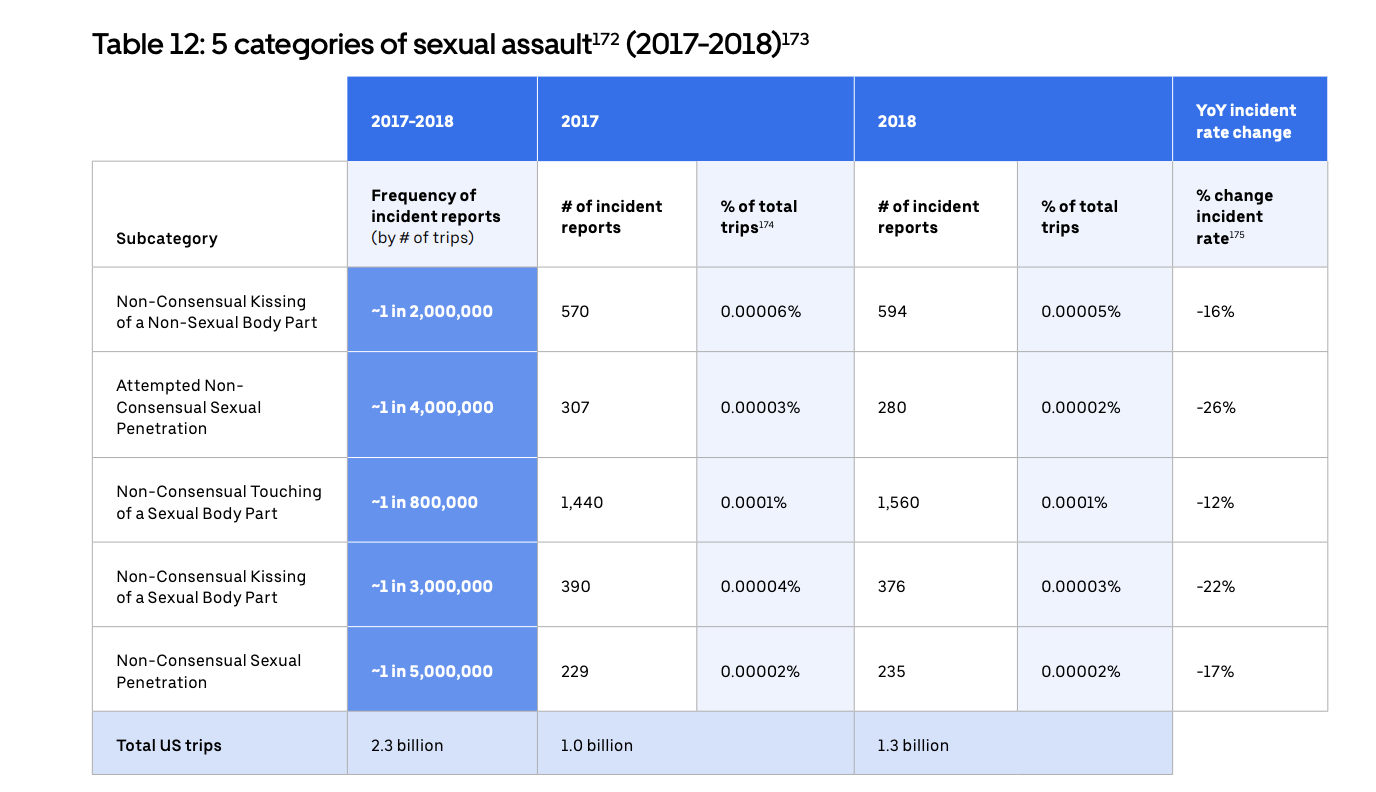Uber just released its first-ever safety report that covers sexual assault. Let’s jump right in.
In 2017, Uber received 2,936 reports pertaining to sexual assault, and received 3,045 in 2018. Despite the increase in raw numbers, Uber saw a 16% decrease in the average incident rate, which it suggests may correlate with the company’s increased focus on safety as of late.

Uber categorizes sexual assaults into five subcategories: non-consensual kissing of a non-sexual body part, attempted non-consensual sexual penetration, non-consensual touching of a sexual body part, non-consensual kissing of a sexual body part and non-consensual sexual penetration.
Regarding the last subcategory, which is rape, Uber received 229 reports of rape in 2017 and 235 reports of rape in 2018. Throughout 2017 and 2018, the reported incidents occurred on 0.00002% of trips, according to Uber.
“While these reports are rare, every report represents an individual who came forward to share an intensely painful experience,” Uber wrote in its report. “Even one report is one too many.”
To be clear, these reported assaults happened to both riders and drivers. Though, Uber found riders account for nearly half of the accused parties across those five most serious sexual assault categories.
“Voluntarily publishing a report that discusses these difficult safety issues is not easy,” Uber Chief Legal Officer Tony West wrote in a blog post. “Most companies don’t talk about issues like sexual violence because doing so risks inviting negative headlines and public criticism. But we feel it’s time for a new approach. As someone who has prosecuted sex crimes and worked on these issues for more than 25 years, I can tell you that a new approach is sorely needed.”
Uber has long been under scrutiny for its safety practices. In 2017, a woman who was raped by her Uber driver in India filed a lawsuit against the company for violating her privacy. In an independent investigation conducted by CNN, the publication found 103 Uber drivers who had been accused of sexual assault or abuse of passengers.
Over the years, Uber has implemented a number of safety measures designed to help prevent situations like those. In May 2018, Uber added an in-app 911 calling feature. Later that year, Uber added a feature called Ride Check, which will activate if the GPS sensor in the driver’s phone notices there’s an abnormally long or unexpected stop during the trip.
“Confronting sexual violence requires honesty, and it’s only by shining a light on these issues that we can begin to provide clarity on something that touches every corner of society,” West wrote. “And, most importantly, by bringing hard data to bear, we can make every trip safer for drivers and riders alike.”
